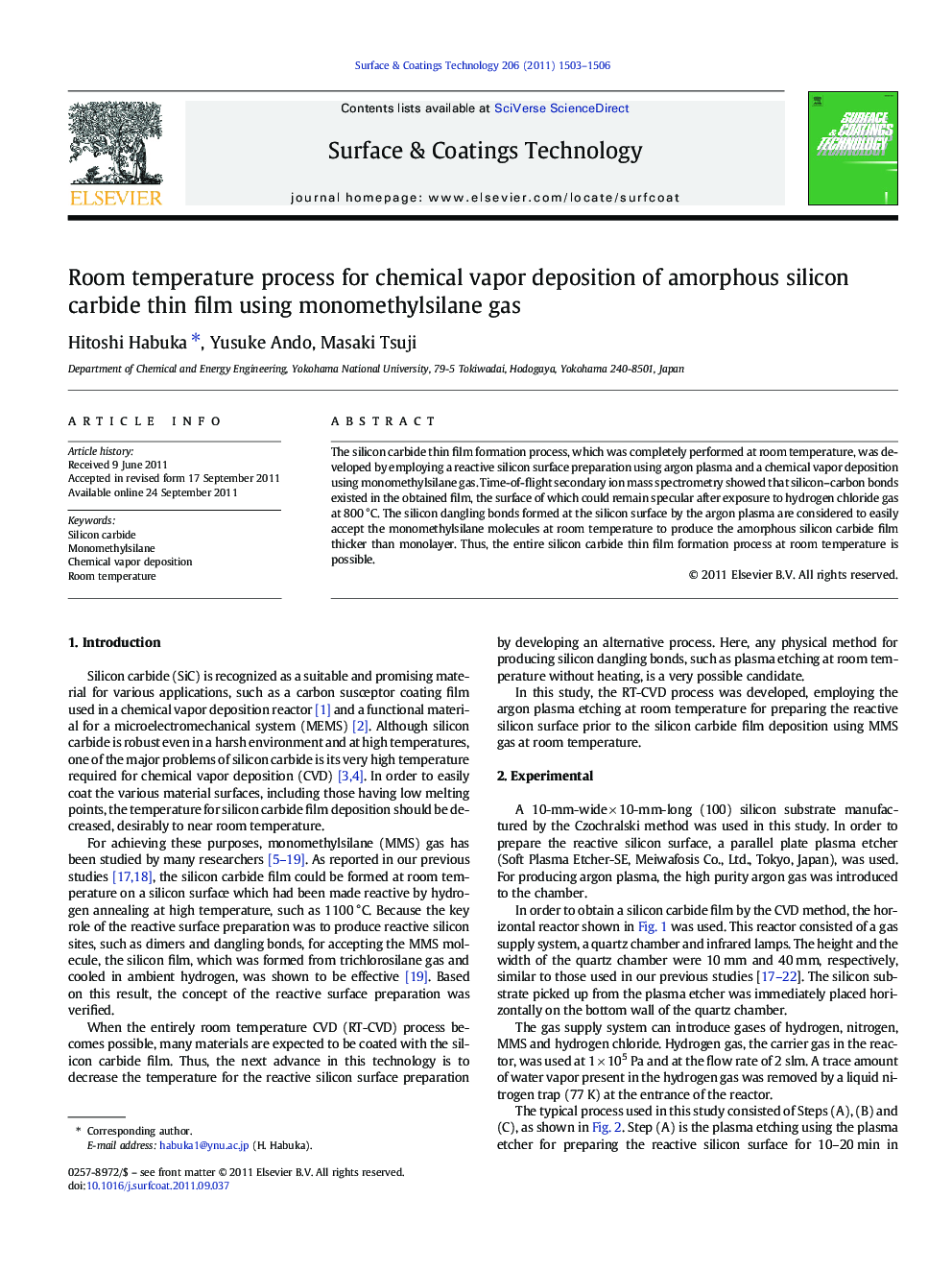| Article ID | Journal | Published Year | Pages | File Type |
|---|---|---|---|---|
| 1658754 | Surface and Coatings Technology | 2011 | 4 Pages |
The silicon carbide thin film formation process, which was completely performed at room temperature, was developed by employing a reactive silicon surface preparation using argon plasma and a chemical vapor deposition using monomethylsilane gas. Time-of-flight secondary ion mass spectrometry showed that silicon–carbon bonds existed in the obtained film, the surface of which could remain specular after exposure to hydrogen chloride gas at 800 °C. The silicon dangling bonds formed at the silicon surface by the argon plasma are considered to easily accept the monomethylsilane molecules at room temperature to produce the amorphous silicon carbide film thicker than monolayer. Thus, the entire silicon carbide thin film formation process at room temperature is possible.
► The amorphous SiC thin film formation process entirely at room temperature was developed. ► A reactive Si surface preparation using Ar plasma was employed. ► A SiC CVD was performed using monomethylsilane gas at room temperature. ► The obtained film could be robust to the exposure to HCl gas at 800 °C.
